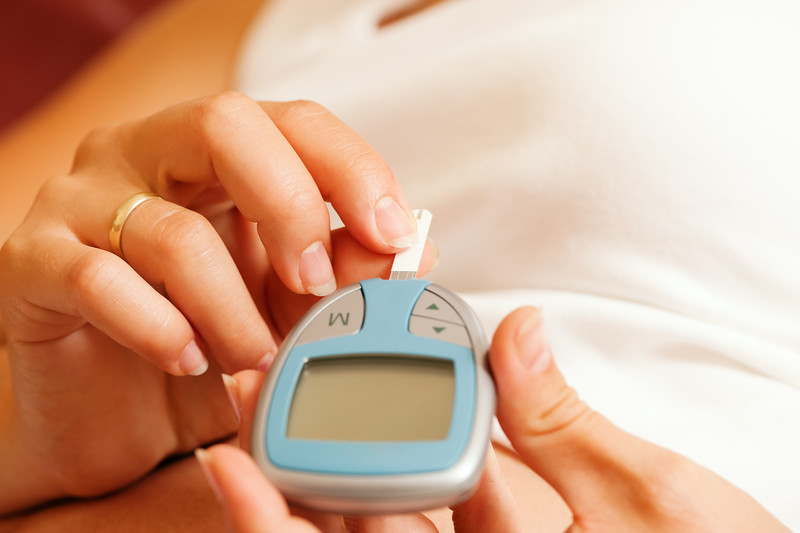Every purchase made online is encrypted with a high level of security you’ve come to expect. Your private information is never shared nor sold, so you can buy with confidence. You can also visit our store if you are in the St. Louis area.

Sleep patterns affect your risk of getting diabetes, but what you may not know is that if you have diabetes, your sleep may be affected. Sleep becomes more important to those experiencing fluctuating blood sugar levels and similar symptoms of type 2 diabetes.
Lack of sleep and decreased sleep quality can change your appetite control, which in turn can lead to weight gain, higher blood sugar levels, and a greater resistance to insulin.
Table of Contents
Diabetes and Sleep Apnea
People with type 2 diabetes may find that they have trouble sleeping. This is in part due to the link between sleep apnea and diabetes.
Sleep apnea is a disorder that leaves you feeling fatigued all day due to periods of halted breathing throughout the night. When your body stops breathing, your brain will wake you enough to recognize the need to breathe. Sometimes, you don’t fully awake and aren’t even conscious of the pattern. However, the constant waking does affect your ability to reach and maintain deep levels of sleep, which are necessary for a good night’s rest.
Both sleep apnea and diabetes are linked to problems with obesity. Studies have shown that the connection between the two health problems are even deeper than once suspected. Researchers suspect that sleep apnea may cause diabetes and diabetes may cause sleep apnea. In fact, sleep apnea has been proven to increase insulin resistance, hunger, and other type 2 diabetes symptoms. Additionally, treating sleep apnea could improve the effects of type 2 diabetes.
Frequent Urination
Another symptom of type 2 diabetes is the frequent urge to use the restroom. This can cause you to wake up numerous times during the night and result in increased exhaustion during the day due to lack of deep REM sleep.
Frequent urination is linked to high blood pressure, another common symptom of diabetes. As your blood pressure increases, so does your need to empty your bladder. Doctors recommend consulting your physician if you awake more than once a night to use the restroom so that the issue can be treated.
RLS and PLMS
People with type 2 diabetes are at risk for other conditions that could affect one’s quality or quantity of sleep. Restless leg syndrome (or RLS) is a common side effect of a diabetes diagnoses. RLS is marked with strange feelings in the legs which often require one to move the affected limbs often. People with RLS are kept awake or awoken when the feeling and movement occur within their legs.
Periodic limb movements (or PLMS) is another symptom of type 2 diabetes, similar to RLS. The symptoms include slow, rhythmic limb movements while asleep. Patients with PLMS either have difficulty staying asleep or awake in the morning feeling unrested and drowsy.
Additional related health concerns include neuropathy and disrupted sleep due to pain, particularly in the feet and legs.
Getting a Good Night’s Sleep
Because of their health condition, diabetics require a good night sleep to help overcome daily symptoms. The first step is to see a physician or sleep specialist if you feel that sleep apnea is a possibility. If you feel daytime drowsiness, insomnia, snoring or loud breathing at night, you may have sleep apnea. Other common symptoms include depression, dry mouth and throat, mood swings, headaches, or weight gain.
If frequent urination keeps you awake at night, discuss the problem openly with your doctor. He or she can provide medication or support to assist you with the problem enabling you to get a solid night’s sleep.
Also, consider these helpful tips for diabetics to help with sleep:
- Bedroom Conditions: Keep your bedroom cool, dark, and comfortable. Check the age of your mattress. Over 8 it may be time to replace Ensure that your mattress is the right firmness for your sleep style, whether you sleep on your side, back, or stomach.
- Caffeinated Drinks: Do not drink caffeinated beverages, such as carbonated beverages, coffee, or tea. Limit these drinks to daytime hours and switch to non-caffeinated choices after dinner to ensure that you do not have stimulants in your system when you are trying to sleep.
- Artificial Light: Limit your exposure to artificial light sources in the evening. At least an hour before bed, shut off the television and put down your cell phone. Read a book, take a bath, or indulge in a hobby. Take time to calm down and unwind before trying to go to sleep.
- Sleep Schedule: Create a bedtime schedule that you follow all week long, all year long. Your body appreciates routine and if you go to sleep at 9:00 every night, your body will eventually expect to be sleepy at 9:00. Keep on schedule with your wind down routine and do the same activities every night before bed to prepare your body for sleep.
Diabetics often have sleep issues that cause daytime drowsiness, but it can be overcome with the right medical help and following certain guidelines. Understanding what is keeping you awake at night and confronting the problem may be all it takes to have a solid night’s sleep once again.
